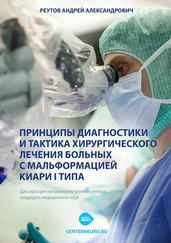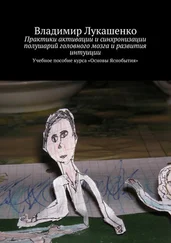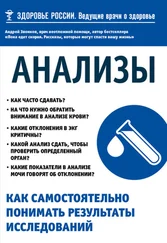Дмитрий Окишев - Хирургическое лечение каверном полушарий большого мозга. Анализ ближайших и отдаленных результатов лечения
Здесь есть возможность читать онлайн «Дмитрий Окишев - Хирургическое лечение каверном полушарий большого мозга. Анализ ближайших и отдаленных результатов лечения» — ознакомительный отрывок электронной книги совершенно бесплатно, а после прочтения отрывка купить полную версию. В некоторых случаях можно слушать аудио, скачать через торрент в формате fb2 и присутствует краткое содержание. Год выпуска: 2016, ISBN: 2016, Жанр: Медицина, на русском языке. Описание произведения, (предисловие) а так же отзывы посетителей доступны на портале библиотеки ЛибКат.
- Название:Хирургическое лечение каверном полушарий большого мозга. Анализ ближайших и отдаленных результатов лечения
- Автор:
- Жанр:
- Год:2016
- ISBN:978-5-4483-3412-2
- Рейтинг книги:4 / 5. Голосов: 1
-
Избранное:Добавить в избранное
- Отзывы:
-
Ваша оценка:
- 80
- 1
- 2
- 3
- 4
- 5
Хирургическое лечение каверном полушарий большого мозга. Анализ ближайших и отдаленных результатов лечения: краткое содержание, описание и аннотация
Предлагаем к чтению аннотацию, описание, краткое содержание или предисловие (зависит от того, что написал сам автор книги «Хирургическое лечение каверном полушарий большого мозга. Анализ ближайших и отдаленных результатов лечения»). Если вы не нашли необходимую информацию о книге — напишите в комментариях, мы постараемся отыскать её.
Хирургическое лечение каверном полушарий большого мозга. Анализ ближайших и отдаленных результатов лечения — читать онлайн ознакомительный отрывок
Ниже представлен текст книги, разбитый по страницам. Система сохранения места последней прочитанной страницы, позволяет с удобством читать онлайн бесплатно книгу «Хирургическое лечение каверном полушарий большого мозга. Анализ ближайших и отдаленных результатов лечения», без необходимости каждый раз заново искать на чём Вы остановились. Поставьте закладку, и сможете в любой момент перейти на страницу, на которой закончили чтение.
Интервал:
Закладка:
28. Cohen D. S., Zubay G. P., Goodman R. R. Seizure outcome after lesionectomy for cavernous malformations. J Neurosurg 83: 237—242, 1995.
29. Commission on Classification and Terminology of the International League Against Epilepsy. Proposal for revised clinical and electroencephalographic classification of epileptic seizures. Epilepsia 22: 4898—501, 1981.
30. Cosgrove G. R. Occult vascular malformations and seizures. Neurosurg Clin N Am 10: 527—535, 1999.
31. Craig H. D., Günel M., Cepeda O., Johnson E. W., Ptacek L., Steinberg G. K. et al: Multilocus linkage identifies two new loci for a mendelian form of stroke, cerebral cavernous malformation, at 7. P. 15—13 and 3q25. 2—27. Hum Mol Genet 7: 1851—1858, 1998.
32. Dandy W. E. Venous abnormalities and angiomas of the brain. Arch Surg 17: 715—793, 1928.
33. de Souza J. M., Domingues R. C., Cruz L. C. Jr. et al. Susceptibility-weighted imaging for the evaluation of patients with familial cerebral cavernous malformations: a comparison with t2-weighted fast spin-echo and gradient-echo sequences. AJNR Am J Neuroradiol. 2008 Jan; 29 (1): 154—8. Epub 2007 Oct 18.
34. Deistung A., Rauscher A., Sedlacik J. et al. Susceptibility weighted imaging at ultra high magnetic field strengths: theoretical considerations and experimental results. Magn Reson Med. 2008 Nov; 60 (5): 1155—68.
35. Del Curling O., Kelly D. L., Elster A. D., Craven T. E. An analysis of the natural history of cavernous angiomas. J Neurosurg. 1991; 75 (5): 702—708.
36. Devinski O. Seizure diksorders. Clinical symposia, 1994. — V. 41. — P. 1—33.
37. Dubovsky J., Zabramski J. M., Kurth J., Spetzler R. F., Rich S. S., Orr H. T. et al. A gene responsible for cavernous malformations of the brain maps to chromosome 7q. Hum Mol Genet 4: 453—458, 1995.
38. Engel J. Jr., Van Ness P. C., Rasmussen T. B., Ojemann L. M. Outcome with respect to epileptic seizures, in Engel J Jr (ed): Surgical Treatment of the Epilepsies. — N. Y.: Raven Press, 1993. Ed 2. — Pp. 609—622.
39. Engel J. Jr. A Proposed Diagnostic Scheme for people with Epileptic Seizures and with Epilepsy. Report of the ILAE Task Force on Classification and terminology. Epilepsia 42: 796—803, 2001.
40. Er U., Spetzler R. F., Cardia A., Lanzino G., Deep-Seated Cerebral Cavernous Malformations. In: Lanzino G, ed., Spetzler RF, ed. Cavernous Malformations of the Brain and Spinal Cord. Thieme; 2007: 71—77.
41. Estes M. L., Morris H. Hr., Luders H. et al. Surgery for intractable epilepsy. Clinicopathologic correlates in 60 cases. Cleveland Clinic Journal of Medicine 55: 441 —447, 1998.
42. Ferrier C. H., Aronica E., Leijten F. S. et al. Electrocorticography discharge patterns in patients with a cavernous hemangioma and pharmacoresistent epilepsy. J Neurosurg. 2007 Sep;107 (3): 495—503.
43. Flemming K. D., Goodman B. P., Meyer F. B. Successful brainstem cavernous malformation resection after repeated hemorrhages during pregnancy. Surg Neurol. 2003 Dec; 60 (6): 545—7; discussion 547—8.
44. Folkersma H., Mooij J. J. Follow-up of 13 patients with surgical treatment of cerebral cavernous malformations: effect on epilepsy and patient disability. Clin Neurol Neurosurg 103: 67—71, 2001.
45. Frerich K. U., Stieg P. E., Friedlander R. M. Classification and Grading Systems. Stieg P. E., Batjer H. H., Samson D. (eds): Intracranial Arteriovenous Malformations. N. Y.: Informa Healthcare, 2007.
46. Garner T. B., Del Curling O. Jr., Kelly D. L. Jr., Laster D. W. The natural history of intracranial venous angiomas. J Neurosurg. 1991 Nov; 75 (5): 715—22.
47. Gil-Nagel A., Dubovsky J., Wilcox K. J., Stewart J. M., Anderson V. E., Leppik I. E. et al: Familial cerebral cavernous angioma: a gene localized to a 15-cM interval on chromosome 7q. Ann Neurol 39: 807—810, 1996.
48. Gralla J., Ganslandt O., Kober H. et al. Image-guided removal of supratentorial cavernomas in critical brain areas: application of neuronavigation and intraoperative magnetic resonance imaging. Minim Invasive Neurosurg. 2003 Apr; 46 (2): 72—7.
49. Gross B. A., Batjer H. H., Awad I. A., Bendok B. R. Cavernous malformations of the basal ganglia and thalamus. Neurosurgery. 2009 Jul; 65 (1): 7—18; discussion 18—9.
50. Gross B. A., Lin N., Du R., Day A. L. The natural history of intracranial cavernous malformations. Neurosurg Focus. 2011 Jun; 30 (6): E24.
51. Günel M., Awad I. A., Finberg K., Anson J. A., Steinberg G. K., Batjer H. H. et al. A founder mutation as a cause of cerebral cavernous malformation in Hispanic Americans. N Engl J Med 334: 946—951, 1996.
52. Gunel M., Laurans M. S., Shin D. et al. KRIT1, a gene mutated in cerebral cavernous malformation, encodes a microtubule-associated protein. ProcNatl Acad Sci USA 99: 10677—10682, 2002.
53. Hayman L. A., Evans R. A., Ferrell R. E. et al: Familial cavernous angiomas: natural history and genetic study over a 5-year period. Am j Med Genet 11: 147—160, 1982.
54. Heffez D. S. Stereotactic transsylvian, transinsular approach for deep-seated lesions. Surg Neurol. 1997 Aug; 48 (2): 113—24.
55. Heros R. C., Ojemann R. G., Crowell R. M. Superior temporal gyrus approach to middle cerebral artery aneurysms: technique and results. Neurosurgery. 1982 Mar; 10 (3): 308—13.
56. Huo L., Wu L., Zhang M. Y. et al. Electrocorticography monitoring in microsurgical treatment of solitary cavernous angiomas. Zhong Nan Da Xue Xue Bao Yi Xue Ban. 2008 May; 33 (5): 448—51.
57. Johnson E. W. Cerebral cavernous malformation, familial. http://www.ncbi.nlm.nih.gov/books/NBK1293/
58. Jung K. H., Chu K., Jeong S. W. et al. Cerebral cavernous malformations with dynamic and progressive course. Correlation study with vascular endothelial growth factor. Arch Neurol 60: 1613—1618, 2003.
59. Kahane P., Munari C., Hoffmann D. et al. Approche chirurgicale multimodale des angiomes caverneux epileptogenes. Epilepsies 6: 113—130, 1994.
60. Kamezawa T., Hamada J., Niiro M. et al. Clinical implications of associated venous drainage in patients with cavernous malformation. J Neurosurg. 2005 Jan; 102 (1): 24—8.
61. Kattapong V. J., Hart B. L., Davis L. E. Familial cerebral cavernous angiomas: clinical and radiologic studies. Neurology. 1995 Mar; 45 (3 Pt 1): 492—7.
62. Kilic T., Pamir M. N., Kullu S. et al. Expression of structural proteins and angiogenic factors in cerebrovascular anomalies. Neurosurgery 46: 1179—1192, 2000.
63. Kim D. S., Park Y. G., Choi J. U., Chung S. S., Lee K. C. An analysis cerebral cavernous angiomas. Neurosurgery 38: 662—670, 1996.
64. Kivelev J., Niemelä M., Blomstedt G. et al. Microsurgical treatment of temporal lobe cavernomas. Acta Neurochir (Wien). 2011 Feb; 153 (2): 261—70. Epub 2010. Sep 26.
65. Kivelev J., Niemelä M., Kivisaari R. et al. Long-term outcome of patients with multiple cerebral cavernous malformations. Neurosurgery. 2009 Sep; 65 (3): 450—5; discussion 455.
66. Kivelev J., Niemelä M., Kivisaari R., Hernesniemi J. Intraventricular cerebral cavernomas: a series of 12 patients and review of the literature. J Neurosurg. 2010 Jan; 112 (1): 140—9.
67. Kondziolka D., Lunsford L. D., Kestle J. R. The natural history of cerebral cavernous malformations. J Neurosurg 83: 820—824, 1995.
68. Kraemer D. K. A., Pizzonia J. H. How do vascular lesions cause epilepsy? In Kotagal P., Lüders H. O. (eds): The Epilepsies, Etiology and Prevention. N. Y.: Raven Press, 1999. — Pp. 385—390.
69. Kraemer D. L., Awad I. A. Vascular malformations and epilepsy: clinical considerations and basic mechanisms. Epilepsia 35 Suppl 6. — 1994. — S. 30—43.
70. Kufs H. Uber heredofmiliare Angiomatose des Gehirns und der Retina, ihre Beziehungen zueinander und zur Angiomatose der Haut. Z Gesamste Neurol Psychiatr 113: 651—686, 1928.
Читать дальшеИнтервал:
Закладка:
Похожие книги на «Хирургическое лечение каверном полушарий большого мозга. Анализ ближайших и отдаленных результатов лечения»
Представляем Вашему вниманию похожие книги на «Хирургическое лечение каверном полушарий большого мозга. Анализ ближайших и отдаленных результатов лечения» списком для выбора. Мы отобрали схожую по названию и смыслу литературу в надежде предоставить читателям больше вариантов отыскать новые, интересные, ещё непрочитанные произведения.
Обсуждение, отзывы о книге «Хирургическое лечение каверном полушарий большого мозга. Анализ ближайших и отдаленных результатов лечения» и просто собственные мнения читателей. Оставьте ваши комментарии, напишите, что Вы думаете о произведении, его смысле или главных героях. Укажите что конкретно понравилось, а что нет, и почему Вы так считаете.





![Дмитрий Зурков - Бешеный прапорщик - Бешеный прапорщик. Большая охота. Возвращение [сборник litres]](/books/411929/dmitrij-zurkov-beshenyj-praporchik-beshenyj-praporchi-thumb.webp)






